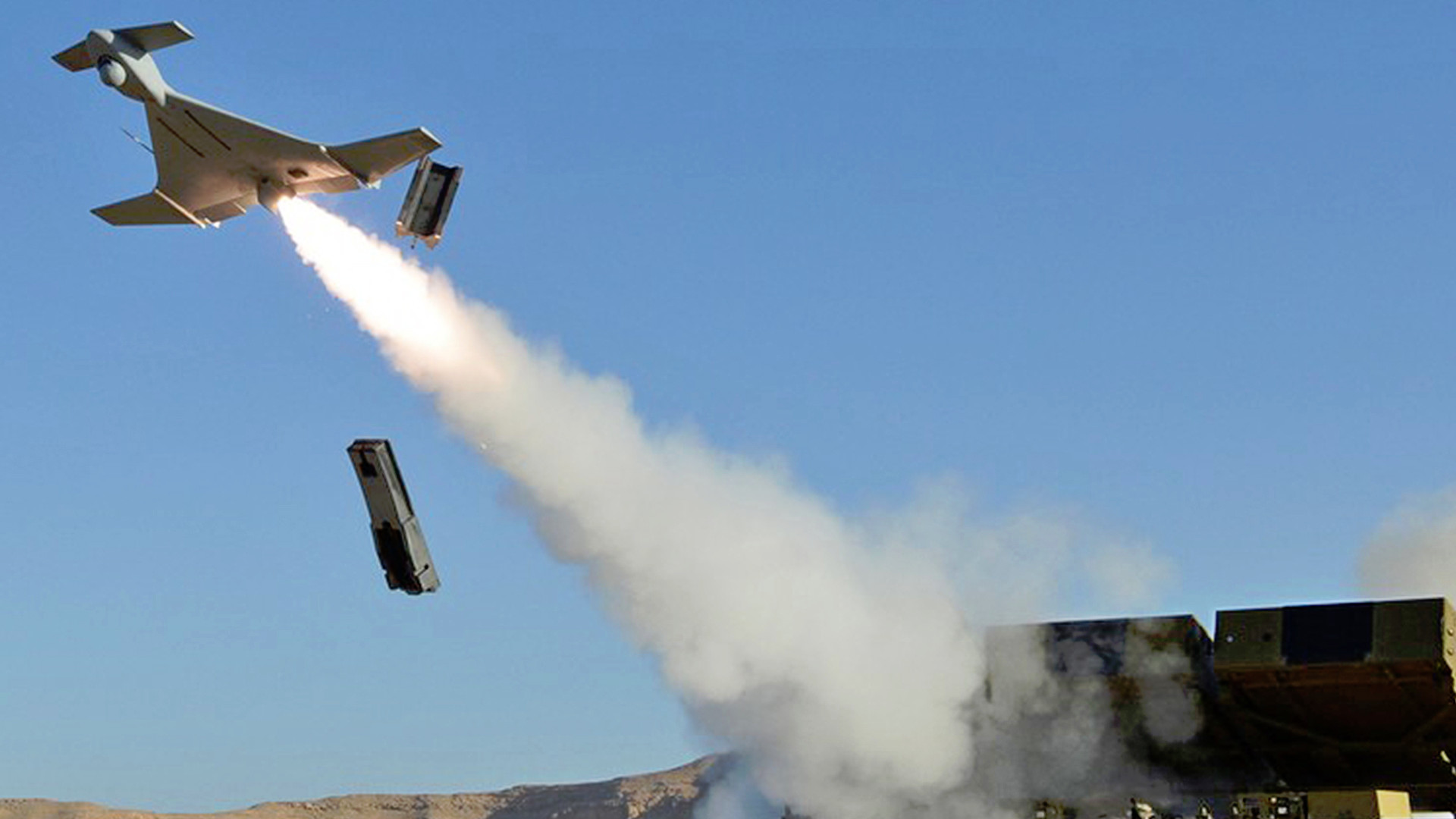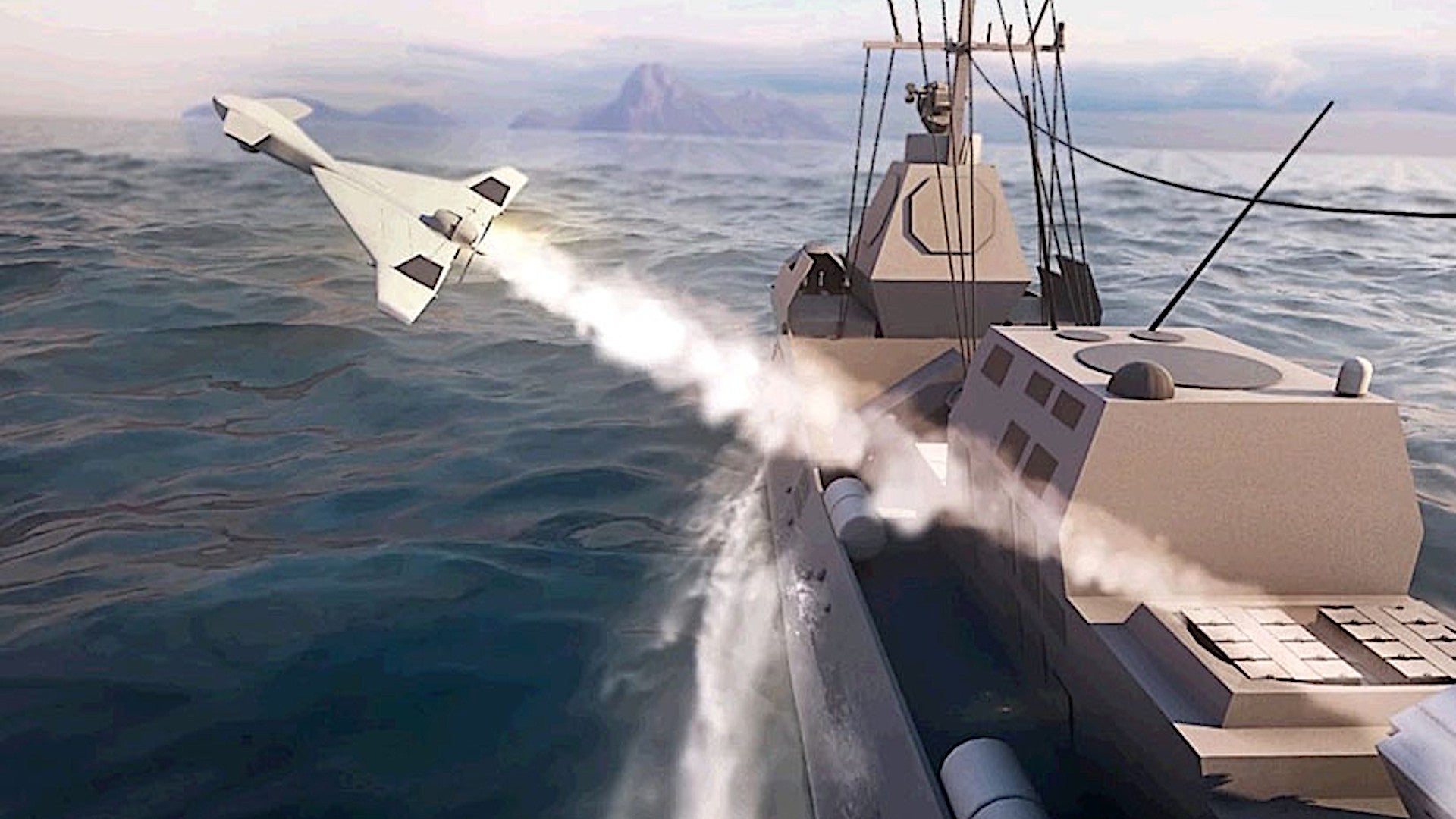Israel Aerospace Industries, or IAI, has secured what appears to be the first sale ever of the maritime version of its Harop loitering munition, or “suicide drone.” The company did not name the customer, but said that they were “the navy of a country in Asia.” Loitering munitions, in general, became a topic of major international discussion after Azerbaijan used Harops to decisive effect in its conflict with Armenia over the disputed Nagorno-Karabakh region last year.
IAI announced the deal on Feb. 1, 2021. The same press release said that the company had sold standard ground-launched examples of Harop to “another customer in Asia” and had secured a purchase order for examples of its Rotem rotary-winged loitering munition from a third “foreign country.” Together, the sales were reportedly worth more than $100 million.

“IAI is a global pioneer in developing the operational concept of a loitering munitions systems, which has ripened to a family of unique and accurate attack systems,” Boaz Levy, IAI’s President and CEO, said in a statement. “These systems, which have added impressive achievements to the operational capability of fighting forces around the globe, constitute central and decisive attack components for advanced battlefields of the future.”
IAI has indeed been a pioneer in the development of suicide drones, which are a sort of hybrid between unmanned aircraft and traditional missiles. Harop and Rotem, among a growing field of similar designs on offer around the world, can operate using a man-in-the-loop control system wherein a human operator sees what the drone sees, via a set of electro-optical and/or infrared video cameras, throughout the entire course of its flight.

Many of these drones have significant degrees of autonomy and can detect, categorize, and track various types of targets, including ones in motion, automatically. They also typically have modes of operation where they will then proceed to strike those targets without any further need for human input. However, even in this mode, the operator can still choose to abort the strike, even at the very last moment, or make manual adjustments to improve accuracy. This all combines to make suicide drones, in general, very precise while also providing additional means to help avoid collateral damage, capabilities you can read about in more detail in this past War Zone piece.
Harop, specifically, find its targets via the aforementioned man-in-the-loop mode. This particular loitering munition emerged in the early 2000s as a successor to the earlier IAI Harpy, which can find certain targets, such as radars, by zeroing in on their emissions. Both Harpy and Harop were initially designed primarily to search for and engage hostile radars in the suppression and destruction of enemy air defense role, or SEAD/DEAD. The two drones are designed to return to the point of launch if they do not find a target, allowing for them to be recovered and reused.

Using the man-in-the-loop control system, Harop can engage a much larger array of targets, something that was very clearly demonstrated by Azerbaijani forces during the fighting over Nagorno-Karabakh last year, where these loitering munitions were a major factor, something you can read more about in the War Zone‘s reporting on that conflict at the time. Azerbaijan had been the first country known to have used Harop in anger, employing examples of these loitering munitions for the first time during previous skirmishes over Nagorno-Karabakh in 2016.
Azerbaijan’s Border Guard, which is a Harop operator, posted the video below online during the fighting with Armenia last year, which underscores the significance of these drones in that conflict.

The Maritime Harop, which IAI unveiled in 2017, is reportedly very similar to the standard ground-based design, with changes including “a launcher with new marine configuration and adjustments of the communication channel of the loitering munition,” according to a company press release. When employed from a ship, the loitering munitions have the ability to engage targets at sea or on land.
It’s not clear what navalized launcher offerings IAI has already developed, but the ground-launched version of Harop are deployed from boxy launch systems holding multiple drones. Concept art the company has released in the past indicates that a derivative of this launcher concept is what it offers for the maritime variant.
“In a complex naval theater, the Harop system gives mission commanders in a fleet of ships the capability to independently and organically collect intelligence, assess targets and strike,” IAI said in its press release regarding the new sales. “The intelligence gathered by the Harop is directly integrated in the vessel’s control room and allows for quick, accurate and lethal decision-making.”
In a maritime context, Harop could be particularly useful for helping to counter threats posed by various kinds of small watercraft, such as fast anti-ship missile-armed types and even explosive-laden suicide boats, and which may be attacking in relatively large numbers. These loitering munitions could target various kinds of air defense and anti-ship threats close to shore, too. The drones could also just give the crew of a ship improved general situational awareness of what’s going on around them, with the added benefit of being able to immediately prosecute any threats that might suddenly pop up.

In addition, while Harops would not be sufficiently powerful to sink a major surface combatant, swarms of them attacking from different vectors could do considerable damage and blind them by knocking out their radars or other sensors. This could result in a mission kill and make the target vessel vulnerable to other types of attacks or take it offline for a prolonged period of time.
With all of this in mind, it’s not hard to see how the maritime version of Harop would be a valuable addition to the arsenal of a navy in the Asia-Pacific region. This would be true for a country that has to prepare for potential conflicts across broad areas that include large expanses of water, as well as enemy-controlled islands.
While we don’t know who the customer is, Israel has a history of selling various tiers of arms to a number of Asian countries, including various nations in Southeast Asia, including Thailand and Vietnam. Countries in that part of the world continue to face the prospect of conflict over China’s expansive and disputed claims to virtually all of the South China Sea.
South Korea, which has acquired examples of Harpy in the past, is another possibility. Harop drones could give South Korean naval vessels a valuable tool against various North Korean threats, including small boats that could be used for the clandestine infiltration of intelligence operatives or raiding parties. The country also faces other regional security concerns, including from China, as well as those arising from territorial disputes with Japan.
One more potential buyer could be India, which is facing growing maritime challenges from long-time rival Pakistan, as well as from China. The Indian government is long-time purchaser of a wide array of Israeli-made munitions, including ground-launched Harops.
We, of course, don’t know for sure who just bought these maritime Harops. This particular suicide drone’s aforementioned performance in last years fighting Nagorno-Karabakh last year has undoubtedly improved IAI’s sales pitch to any prospective customer.
What we do know is that Harop is coming to Asia in its maritime form, which will very likely open the doors for new sales of the navalized variant in the future.
Contact the author: joe@thedrive.com
